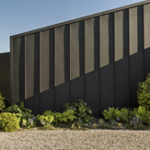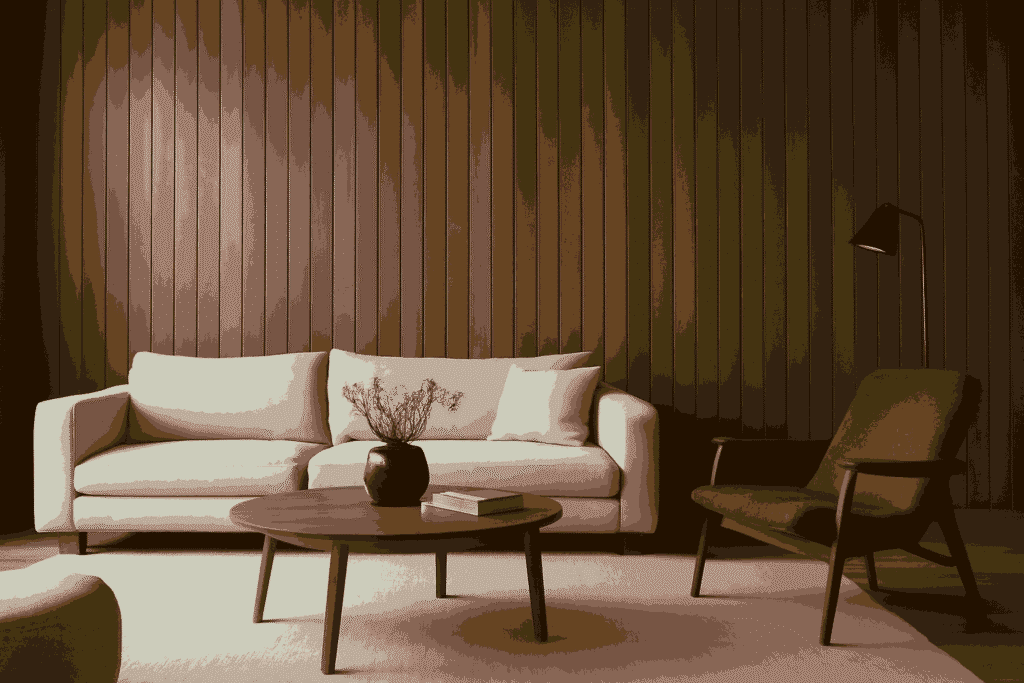Wall panels have emerged as one of the most versatile and sought-after interior design solutions in recent years. Whether you’re renovating an old room or building a new home, wall panels can instantly elevate the space’s look and feel. Their ability to enhance aesthetics, offer functional benefits, and provide easy installation has made them a popular choice among homeowners, designers, and builders alike.
This comprehensive guide will delve into the world of wall panels, exploring their types, benefits, and practical applications. We’ll also give you tips on how to choose the right wall panel for your home, helping you make informed decisions that complement your personal style and functional needs.
1. Understanding Wall Panels: A Complete Guide
Wall panels come in a variety of materials and designs, making them highly customizable to suit different design preferences. Common types include wood panels, natural veneer panels, fluted panels, and many others. The variety of materials available ensures that you can find wall panels suitable for both traditional and modern spaces.
Types of Wall Panels
-
Wood Panels: Known for their timeless appeal, wood panels are often used to create a warm, rustic feel in living rooms and bedrooms. They are available in different finishes and textures, such as smooth, rough, or natural.
-
Natural Veneer Panels: These panels are made from real wood but are thinner and typically more affordable than solid wood panels. They are often used to replicate the look of wood at a lower cost.
-
Fluted Panels: These are often used in both modern and traditional settings to create texture on walls. They can be made from wood or composite materials, offering a sleek and refined look for spaces like kitchens or hallways.
-
PVC Panels: These panels are incredibly durable and cost-effective, often used in high-moisture areas like bathrooms or kitchens. They are water-resistant and easy to maintain, making them an excellent choice for practical applications.
-
Metal Panels: For a more industrial or modern look, metal panels (such as steel or aluminum) are a great option. They are especially popular for accent walls, doors, and ceilings due to their sleek and polished finish.
2. The Benefits of Wall Panels
Wall panels offer numerous advantages that make them an ideal option for homeowners looking to refresh their interiors. Here are some of the key benefits:
-
Aesthetic Appeal: Wall panels instantly improve the visual appeal of a room. Whether you’re looking to add texture, create a feature wall, or simply cover an unattractive surface, wall panels offer a stylish solution.
-
Durability: Many types of wall panels are highly durable and resistant to wear and tear. Wood panels, for example, can last for decades when properly maintained, while PVC panels are especially resistant to moisture and impact damage.
-
Easy to Install: Compared to traditional wall treatments like paint or wallpaper, wall panels are relatively easy to install. Many panels come with simple interlocking mechanisms or adhesive backings, making them perfect for DIY projects or professional installations.
-
Low Maintenance: Wall panels are low-maintenance and easy to clean. Unlike painted walls, which can stain and require regular touch-ups, panels simply need a quick wipe-down to maintain their beauty.
-
Acoustic Properties: Some wall panels, such as those with a textured finish or acoustic properties, can help reduce noise in a room. This is especially useful in shared living spaces or home offices where quiet is important.
-
Energy Efficiency: Certain wall panels, especially those designed with insulation properties, can help with energy efficiency by reducing heat loss or gain. This can contribute to lower heating and cooling costs, making them a sustainable option for homeowners.
3. How to Choose the Right Wall Panel for Your Home
Selecting the right wall panel depends on a variety of factors, such as your design preferences, the room’s function, and your budget. Here are some tips to help you choose the best option:
-
Consider the Room’s Function: Think about where the panels will be installed. For example, in high-moisture areas like bathrooms, you’ll want to select moisture-resistant panels, such as PVC. For bedrooms or living rooms, you might prefer wood or natural veneer panels for a warmer, cozier feel.
-
Match Your Style: Wall panels come in a range of colors, textures, and finishes, so it’s essential to choose one that complements your home’s existing decor. Wood panels, for instance, work well with rustic, farmhouse, and traditional styles, while metal or fluted panels may be better suited for contemporary or industrial designs.
-
Maintenance Requirements: If you’re looking for low-maintenance options, you might want to opt for PVC or composite panels. These materials are easy to clean and less likely to show wear and tear over time.
-
Budget: Wall panels vary in price depending on the material. Wood and natural veneer panels tend to be more expensive, while PVC and composite options are often more affordable. Determine your budget before shopping to narrow down your choices.
-
Durability: If you’re investing in a wall panel system for a high-traffic area or for the long term, make sure to choose durable materials. Solid wood, for example, offers long-lasting beauty and resilience.
4. Incorporating Wall Panels in Different Spaces
Wall panels can be used in a variety of spaces, each with a unique effect. Here are some ideas for incorporating wall panels into different rooms:
-
Living Rooms: Accent walls with wood or natural veneer panels can add warmth and sophistication to a living room. Fluted panels can also create a stylish feature wall behind a TV or fireplace.
-
Kitchens: For a modern look, fluted panels can be used to enhance a kitchen backsplash. Natural veneer or metal panels can also be used for creating clean lines and an industrial aesthetic.
-
Bedrooms: Soft textures like wood panels or natural veneer can help create a cozy, tranquil bedroom retreat. Install panels behind the bed to create a headboard-like effect or use them as a feature wall for added drama.
-
Hallways: Narrow hallways can be visually expanded using vertical wall panels. A combination of wood and metal panels can also add texture and depth, making a hallway more dynamic.
-
Bathrooms: Moisture-resistant wall panels, such as PVC or composite materials, are ideal for use in bathrooms. You can choose from a variety of designs, from sleek, minimalist panels to more textured or decorative options for a luxurious touch.
-
Exteriors: Wall panels can be used on the exterior of your home as cladding. Shiplap panels, for example, create a timeless look for your home’s facade. Panels made from durable materials, such as fiber cement or metal, are perfect for outdoor use due to their resistance to the elements.
5. Conclusion
Wall panels are an excellent choice for homeowners looking to improve both the functionality and aesthetics of their living spaces. With their variety of materials, easy installation, and many benefits, wall panels are a versatile option for nearly every room in the house. Whether you’re adding texture to your living room or creating an accent wall in your bedroom, wall panels can transform any space into something special.
For more inspiration on how wall panels can elevate your home design, take a look at our collection of wall panels and related products on our website USA Builders Depot.
By carefully selecting the right type of wall panel, you’ll not only enhance the beauty of your home but also increase its functionality and value. The possibilities are endless, so start planning your next project today!
- Transform Your Home with Wall Panels: A Stylish, Functional Upgrade
- Explore how wall panels can transform your home with their aesthetic appeal, durability, and easy installation. Learn about the different types of wall panels and their benefits for every room.
- Wall panels
Related posts:
 Can Residential End of Lease Cleaning Help You Get Your Bond Back?
Can Residential End of Lease Cleaning Help You Get Your Bond Back?
 How Much Do Gutter Services Cost in Bradford in 2025 | Complete Price Guide
How Much Do Gutter Services Cost in Bradford in 2025 | Complete Price Guide
 Top-Rated Swimming Pool Remodeling in Hoover AL You Can Trust
Top-Rated Swimming Pool Remodeling in Hoover AL You Can Trust
 Hosting a Big Event? Pre & Post-Party Cleaning Tips You’ll Thank Us For
Hosting a Big Event? Pre & Post-Party Cleaning Tips You’ll Thank Us For
 Safeguard Your Home: Professional Gutter Cleaning Fairfield Keeps Water Where It Belongs
Safeguard Your Home: Professional Gutter Cleaning Fairfield Keeps Water Where It Belongs
 Control Moisture and Prevent Mildew with Transparent Tarpaulin
Control Moisture and Prevent Mildew with Transparent Tarpaulin
 Gutter Cleaning Heathmont – Safeguard Your Home with Expert Gutter Maintenance
Gutter Cleaning Heathmont – Safeguard Your Home with Expert Gutter Maintenance
 How Cladding Can Improve the Thermal Efficiency of Bournemouth Homes
How Cladding Can Improve the Thermal Efficiency of Bournemouth Homes








